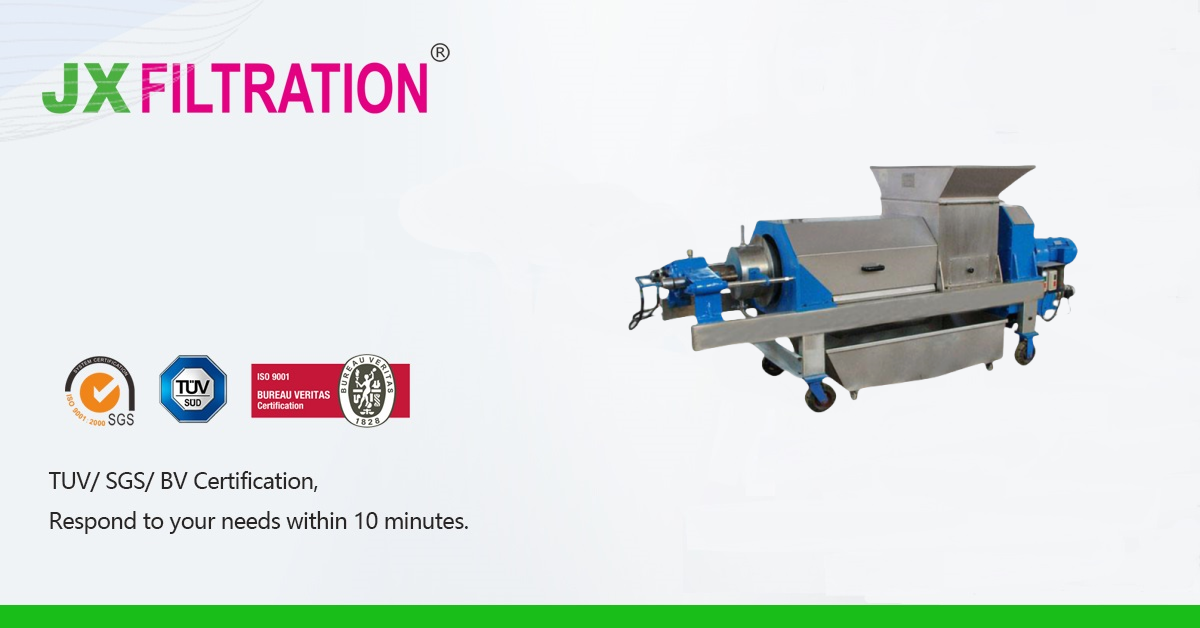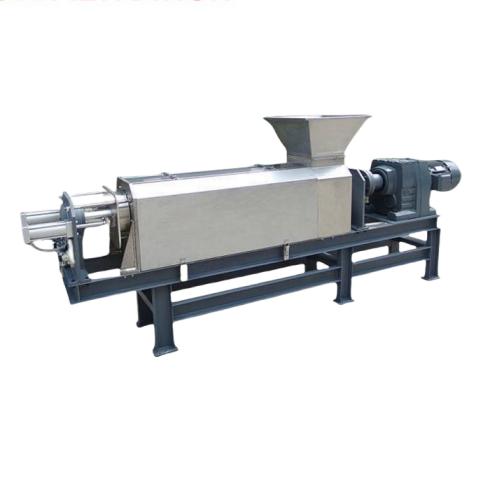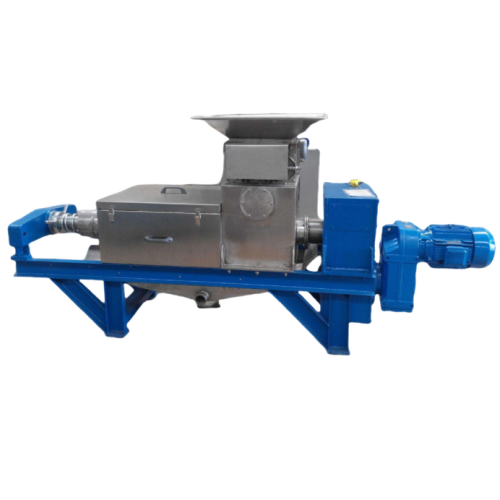United States + Screw Press + Food Scraps Dewatering
Product: Screw Press
Country: United States
Application: Food Scraps Dewatering
The ability of a Screw Press to dehydrate food scraps lies in its ingenious application of mechanical principles to solve a physical separation problem. By applying intense, sustained mechanical pressure, it overcomes the binding forces between water molecules and the solids of the food scraps, forcing free water and some bound water through the mesh to be separated.

1. Core Principle: Mechanical pressure disrupts the form in which water exists.
Water in food scraps exists primarily in two forms:
- Free water: Found in the spaces between material particles, it is highly fluid and requires less energy to remove.
- Bound water: Bonded to solid matter through capillary forces, surface adsorption, or intracellular pressure, it requires greater energy to separate.
The mechanical pressure provided by the screw press provides this energy. The process is like a super-powerful "twisting towel":
- Initial stage: The pressure easily squeezes out a large amount of free water, resulting in rapid dehydration and significant results.
- Mid-stage: The pressure begins to overcome capillary forces, squeezing out water from smaller crevices.
- Later stage: The intense pressure can even break cell walls, squeezing out some bound water within the cells and further compressing the solid structure.
2. Key Designs: How to Achieve and Optimize This Process?
The extruder is more than a simple "one-shot press." Its ingenious design ensures efficient and continuous dehydration.
Screw Structure (Taking the most common screw press as an example):
- Variable Pitch/Variable Diameter: The screw shaft's pitch gradually decreases from the feed inlet to the discharge outlet, or the shaft diameter gradually increases. This shrinks the space for the material passage, continuously compressing the volume and thereby gradually increasing the pressure.
- Screw Propulsion: The rotating screw blades continuously push the material forward while simultaneously kneading and squeezing it in the opposite direction, ensuring continuous and uniform pressure.
Screen Filtration:
- The extruder is wrapped with a finely punctured screen (usually made of stainless steel) to remove only the water and not the residue. The extruded liquid flows through these perforations under pressure, while the solid particles are trapped within the screen.
Resistance Device:
- At the discharge outlet, there is usually a damper controlled by a counterweight, spring, or hydraulic device. This device adjusts the size of the discharge outlet, thereby controlling the internal pressure level. The greater the resistance, the more material accumulates inside, the greater the pressure, and the drier the resulting sludge.
The screw press is suitable for dehydrating food waste because it integrates continuously increasing mechanical pressure, a highly efficient solid-liquid separation screen, and an adjustable pressure control system. These three elements work together to successfully simulate and amplify the "wringing out a towel" effect, effectively separating water from food waste.
After-Sale Services
- Quality guarantee: 12 months after the equipment having been operated.
- Satisfied after-sell service: free maintenance and inspection.
- Detailed installation instructions, CAD drawing and product qualification certificate.
Any Requirements, Contact Us Now!
Nina
Email/Teams: nina@filtrationchina.com
Mobile/WhatsApp/WeChat: +86 17269571060



